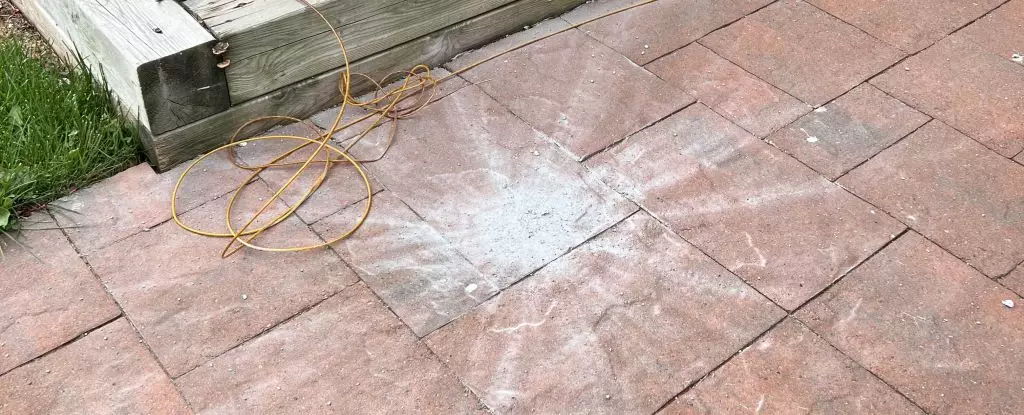In an age dominated by technology, the phenomenon of meteorites striking Earth has never been more accessible or documentable. The recent narrative from Charlottetown, Prince Edward Island, heralds a unique convergence of modern surveillance technology and celestial events, marking a remarkable first in meteorite observation. On a seemingly ordinary day in July 2024, a Ring doorbell camera captured not only the visual spectacle of a meteorite descending but also, perhaps for the first time in history, the audial consequence of such an event—the unmistakable sound of a meteorite striking the pavement. Joe Velaidum and Laura Kelly found themselves at the epicenter of this uncommon event, which would soon puzzle and delight both scientists and the public alike.
While walking their dogs, Velaidum and Kelly unwittingly returned home to discover a scene ripe for curiosity—a small heap of gray debris lay scattered on their walkway. Initially, the significance of this residue might have slipped beneath the couple’s radar, had it not been for the keen observations of Kelly’s parents, who posited that the disruption might be linked to a meteorite fall. This connection led Velaidum to consult the footage from his Ring camera, uncovering a celestial event that echoed far beyond their suburban neighborhood.
Velaidum’s shock about his proximity to the event deepens the narrative: “If I’d have seen it, I probably would’ve been standing right there, so it probably would’ve ripped me in half.” Such reflections remind us of how unassuming moments can intertwine human life with the raw forces of nature, emphasizing that even minor encounters with the cosmos can evoke awe.
Meteorites are rather commonplace, with the Earth’s atmosphere receiving an estimated 48.5 tons of meteoric material daily. However, the vast majority of this material disintegrates before it touches the ground. The odds of a meteorite surviving to land are incredibly slim—referencing that only a handful achieve the status of fireballs each year, and even fewer manage to remain intact upon reaching the Earth’s surface.
The significance of the Charlottetown Meteorite escalated as geologist Chris Herd of the University of Alberta engaged with the fragments ejected from the impact. His assessment revealed a striking classification for this meteorite: it belonged to the ordinary chondrite group—meteorites that hold the key to understanding the early Solar System’s composition. These celestial remnants, largely unchanged and representative of primordial materials, open a window into the dust that predated our planets and stars.
Herd’s enthusiasm encapsulated the scientific community’s fascination, voicing, “No other meteorite fall has been documented like this, complete with sound.” His statement underlines the event’s unique position in both celestial observation and scientific study.
There is an inherent thrill in the discovery of something as rare as a meteorite falling directly into one’s vicinity, but it also prompts an exploration of the implications of such events from a scientific and cultural standpoint. Beyond the excitement of the meteorite’s arrival, the ability to document the auditory and visual components presents a fresh canvas for scientific inquiry. We are no longer reliant solely on seismic instruments or human witnesses to recount these cosmic encounters; technology empowers us to witness and record them in ways that scientific exploration has only dreamt of before.
Yet, even as exciting as this moment may be for the informed enthusiast, one must reflect on the cosmic randomness that governs these events. The true rarity of terrestrial meteorite impacts means that the chances of experiencing such a phenomenon remain low for the average individual—much like winning the lottery. For the fortunate residents of Charlottetown, however, this unexpected gift serves as a reminder of the vast, intertwining narratives between Earth and the cosmos.
As the world leans into an ever-expanding quest for knowledge, the occurrence of meteorite falls urges individuals to cultivate a sense of curiosity about the universe. While hunting for meteorites may be impractical for many, there are subtler ways to engage with the omnipresent remnants of space, such as exploring your own environment for microscopic particles. Whether part of a grand celestial event or merely the dust of everyday life, these elements connect us solidly with the cosmos.
The Charlottetown Meteorite offers not only a historical moment within meteorite studies but also a call to revel in the unexpected intricacies of our relationship with nature and technology. The sky, after all, remains full of surprises, just waiting to be explored by the curious minds of today.


Leave a Reply